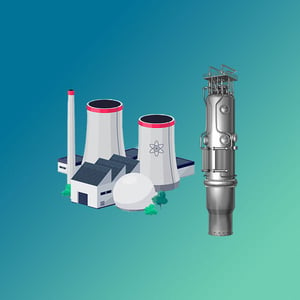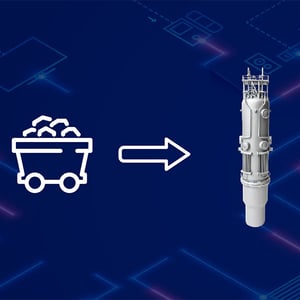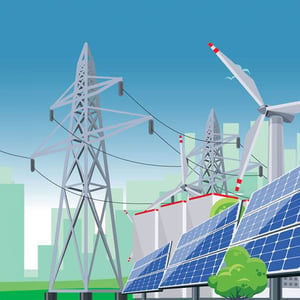
SMR Control Room Simulators Boost Safety & Efficiency
Introduction
Small modular reactor (SMR) control room simulators play a crucial role in advancing the nuclear energy sector. These sophisticated systems replicate the environment of an SMR control room to provide a safe, hands-on platform for training, analysis, and operational optimization. Beyond serving as a training tool, they also inform reactor design, improve safety measures, and foster confidence among stakeholders. Here, we explore the core functions, key components, and various applications of SMR control room simulators, as well as take a closer look at NuScale Power's innovative Energy Exploration (E2) Centers.
Core Functions of SMR Control Room Simulators
At their core, SMR control room simulators are designed to mimic the operation of nuclear facilities under realistic conditions. They cover a range of critical functions that ensure the competency and readiness of operators while contributing to overall safety and efficiency.
Operator Training and Certification
Simulators provide an immersive training experience for operators. By replicating real-life SMR operations, trainees can manage routine tasks such as startup, shutdown, and load following. They also simulate emergency conditions, allowing operators to practice responses to incidents like a loss-of-coolant accident (LOCA) or severe weather events. This hands-on learning environment ensures operators are equipped with the skills and confidence needed to handle complex scenarios without real-world risks.
Human Factors and Ergonomics Validation
Understanding how humans interact with controls and indications is critical for designing a safe and user-friendly environment. Simulators allow engineers to test and refine control room layouts, alarm systems, and workflows. This validation ensures that every element of the control room supports effective decision-making and minimizes operator error.
Procedure Development and Testing
Simulators are invaluable for engineers and operators tasked with developing and testing operational procedures. From routine checks to off-normal conditions, simulators help pinpoint weaknesses or inefficiencies in processes. This iterative approach enables teams to refine strategies before deploying them in live operations.
System Integration Testing
Instrumentation and control (I&C) systems are essential for plant operations, and simulators provide a testbed to ensure their seamless integration. By identifying mismatches or unexpected control responses during testing, engineers can resolve issues early and avoid costly mistakes during construction or operation.
Emergency Response Drills
Preparedness is key in any nuclear operation, and simulators serve as a critical tool for emergency readiness. Operators and support teams can use them to practice responses to a variety of potential accident scenarios. Since these scenarios are replayable, teams can analyze their actions in detail and fine-tune protocols for improved safety.
Key Components of SMR Control Room Simulators
High-quality simulations depend on advanced technologies and features that replicate the SMR control room environment. Here are the key components that make it possible:
- High-Fidelity Plant Models: These models use thermal-hydraulic and neutronic data to recreate the behavior of a specific SMR. The results are highly realistic simulations that mimic plant operations.
- Digital Twin Interfaces: Simulators provide graphical user interfaces and control systems mirroring the actual SMR’s digital setup, enabling authentic operator interaction.
- Instructor Console: Trainers use this feature to initiate scenarios, modify conditions, and monitor operator responses. It also allows them to add malfunctions or unexpected events to test problem-solving skills.
Applications Beyond Training
While operator training is a primary use case, the versatility of SMR control room simulators extends to other valuable applications:
- Regulatory Engagement: Regulators often use simulators to understand reactor behavior and confirm that safety and operational standards are met.
- Stakeholder Education: Simulators are effective for demonstrating SMR operations to investors, policymakers, or the public, increasing transparency and confidence.
- Design Iteration: Data from simulators help developers refine safety and efficiency features, fostering innovation in next-generation SMR designs.
NuScale’s E2 Centers: Pioneering SMR Training and Innovation
A standout example of cutting-edge simulator technology in action is our E2 Centers. These state-of-the-art facilities take SMR control room simulation to the next level, serving as both training hubs and educational tools.
Features and Functionality
At the heart of the E2 Center is a simulated control room for the NuScale design. Using advanced computer modeling, the center allows users to engage in hands-on experiences that mirror real-world nuclear operations. Workstation interfaces enable participants to input parameters, conduct scenarios, and observe the plant’s response. Notably, the system shows the status of up to 12 modules, offering a comprehensive view of multi-unit operations.
Innovative features include:
- Digital Procedures Library: Operators have access to automated guides that ensure actions align with standard operating procedures.
- Tiered Notification System: This system prioritizes notifications, combining alarms with relevant cautions and notices for clarity.
- Integrated Emergency Procedures: Graphical interfaces provide real-time safety updates and link directly to emergency protocols.
- Automated Operational Sequences: Operators can easily modify power outputs or manage specific equipment, streamlining operational control.
A Global Training Initiative
E2 Centers are not just for operators. They provide valuable training to students, researchers, and future industry professionals worldwide. By immersing participants in realistic scenarios, these facilities prepare the next generation of nuclear scientists, engineers, and operators while promoting a deeper understanding of SMR technologies.
Conclusion
SMR control room simulators, exemplified by NuScale E2 Centers, are reshaping the nuclear energy landscape. They are indispensable for ensuring safety, boosting operational efficiency, and fostering innovation. By providing hands-on training, supporting regulatory and design efforts, and enabling emergency preparedness, these simulators pave the way for a more secure and sustainable energy future. Whether you’re a seasoned operator, an aspiring engineer, or a policy advocate, SMR simulators represent the cutting-edge tools that will define the next era of nuclear power.



